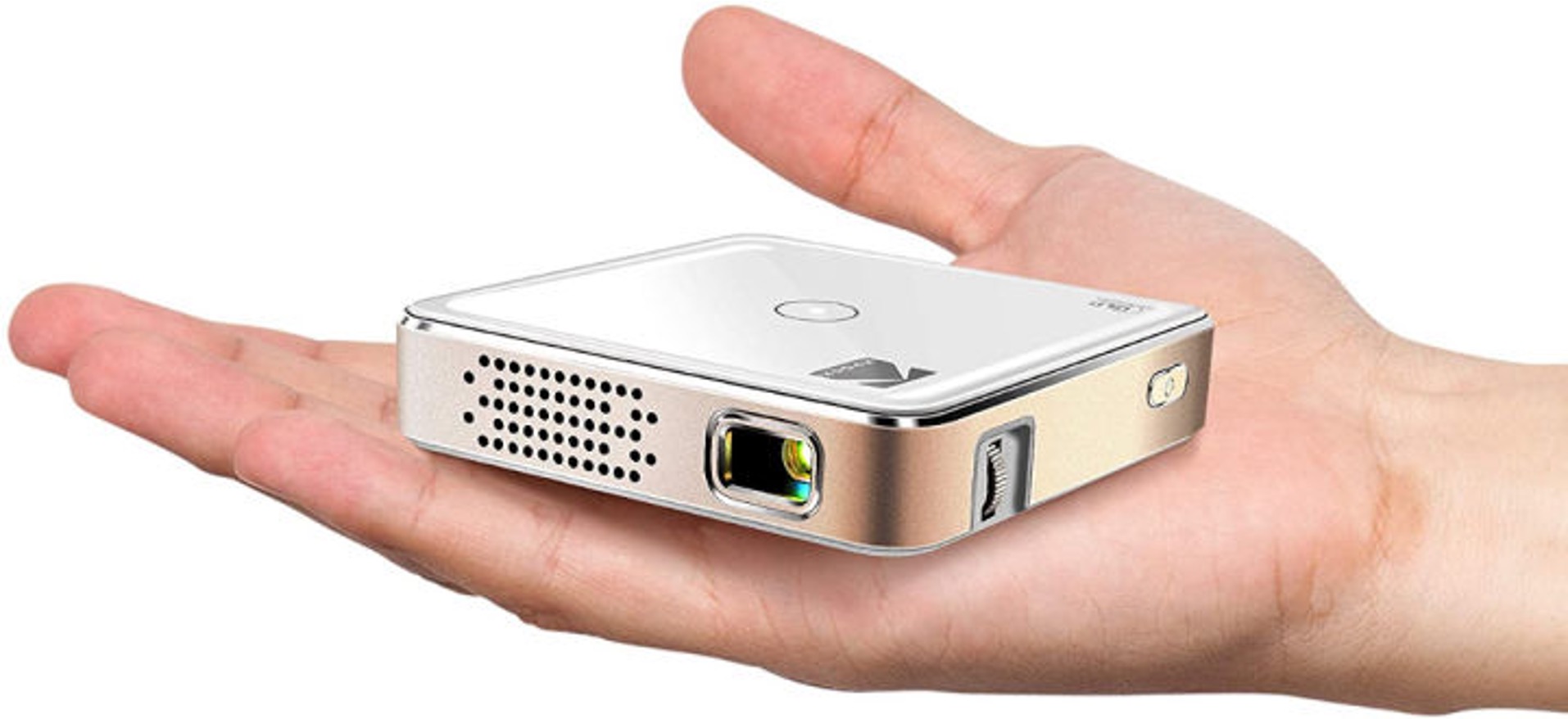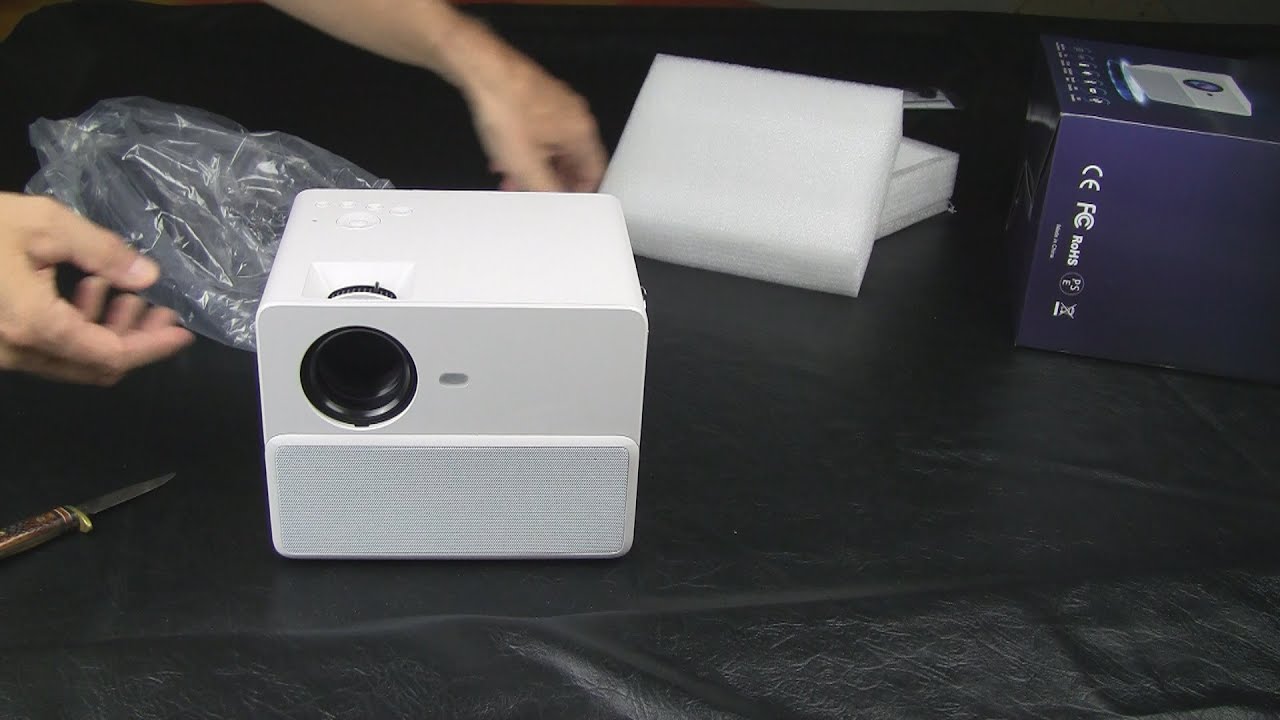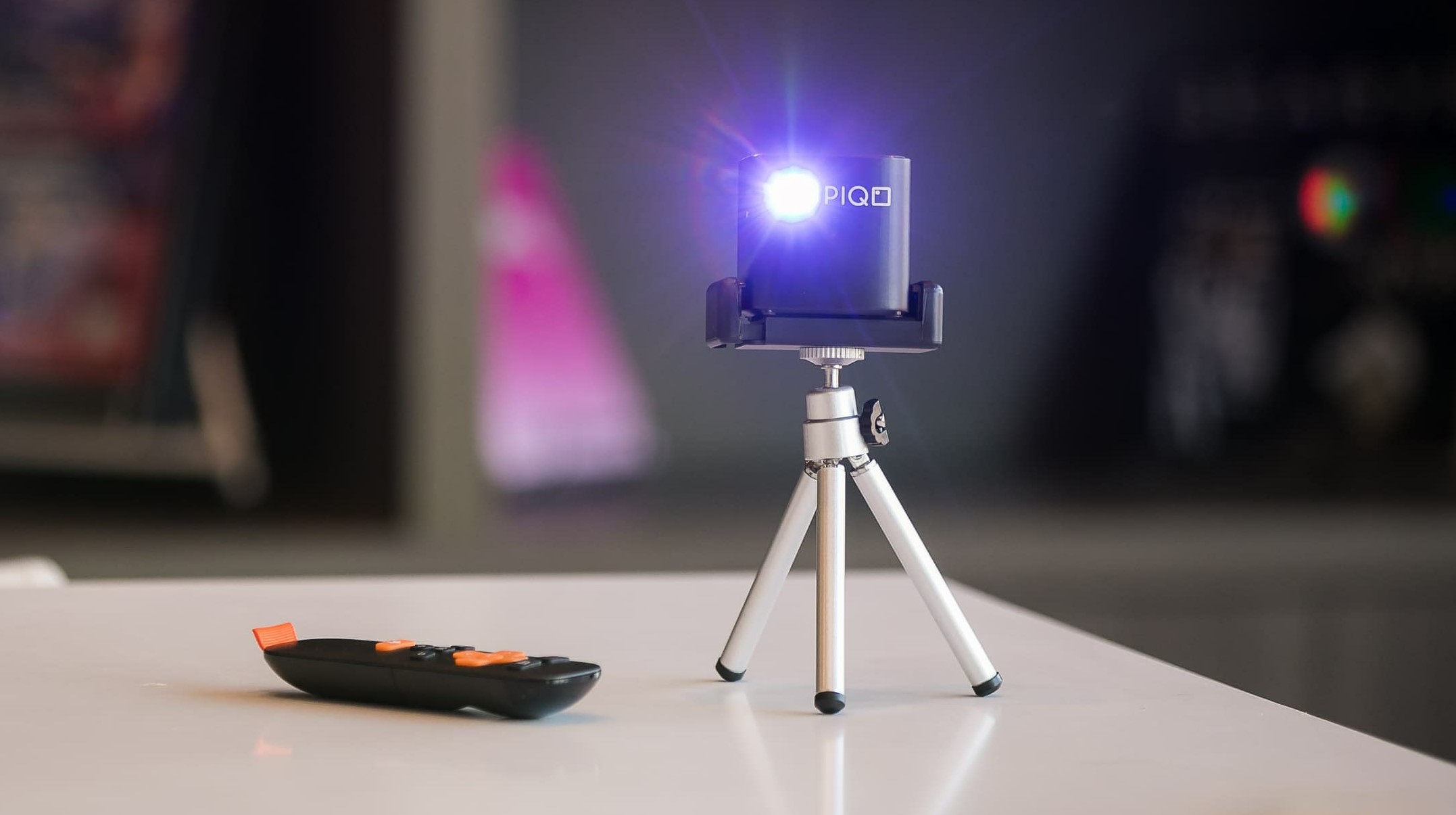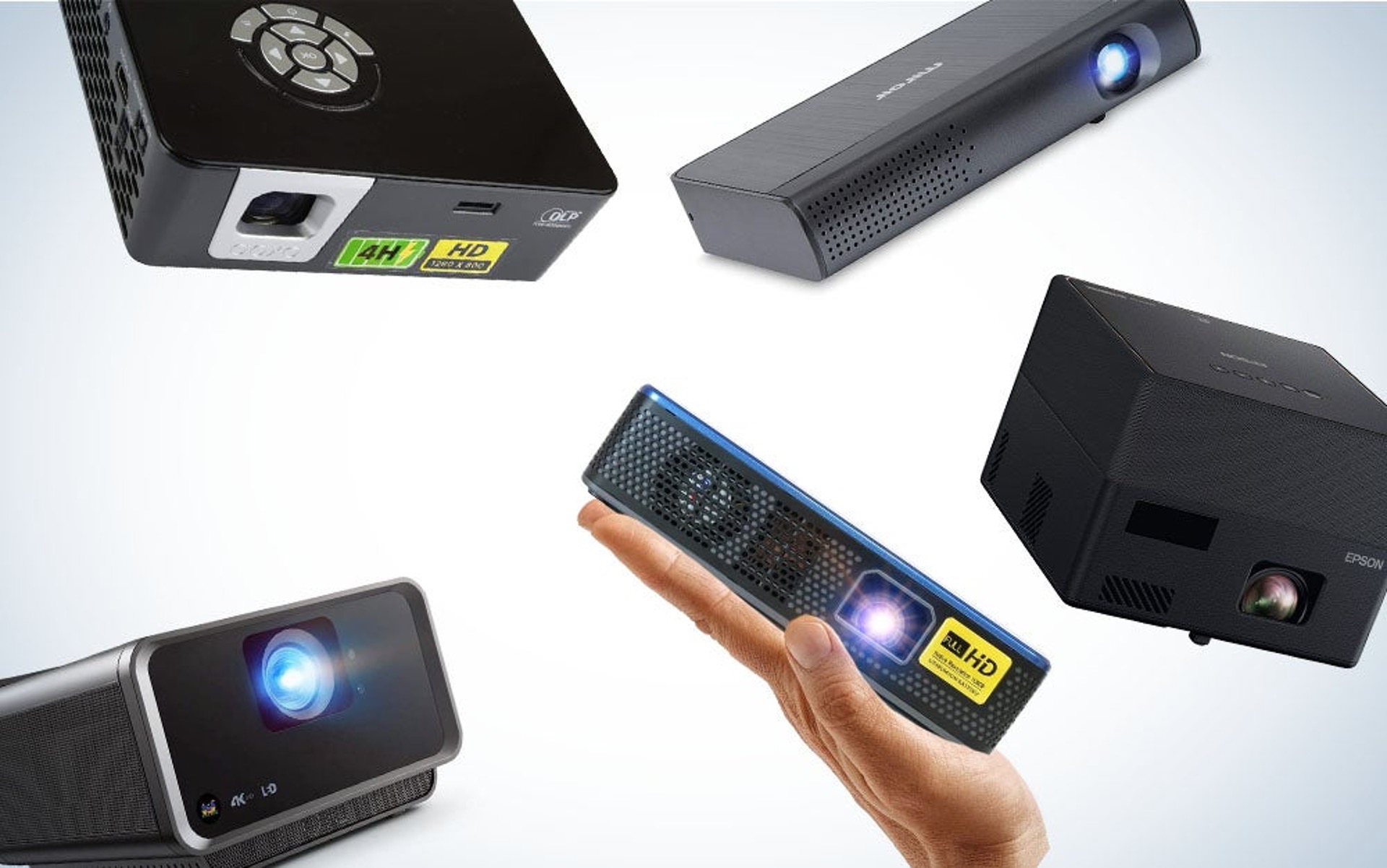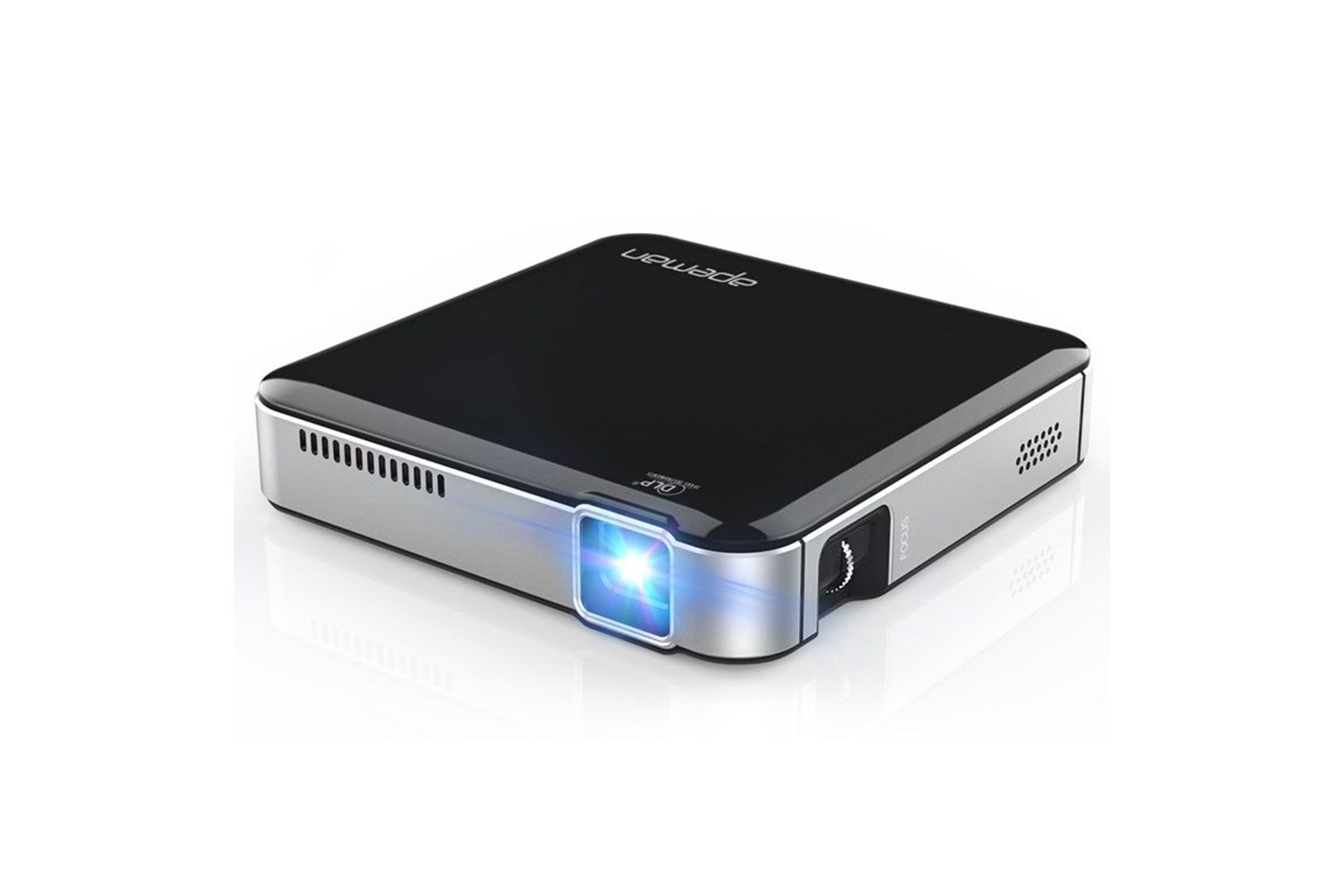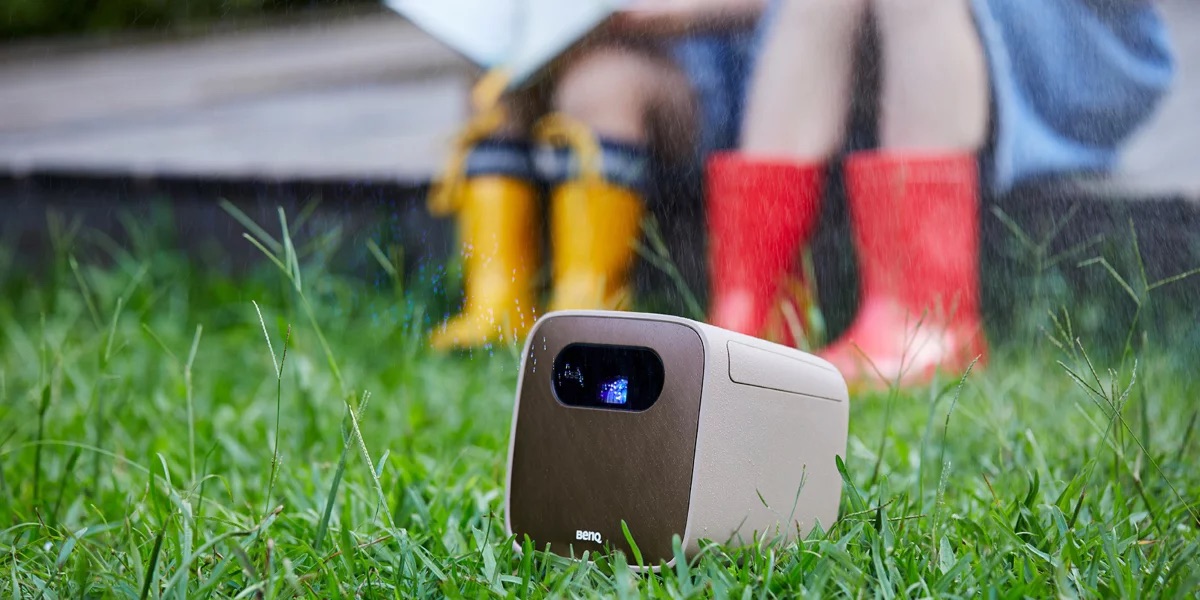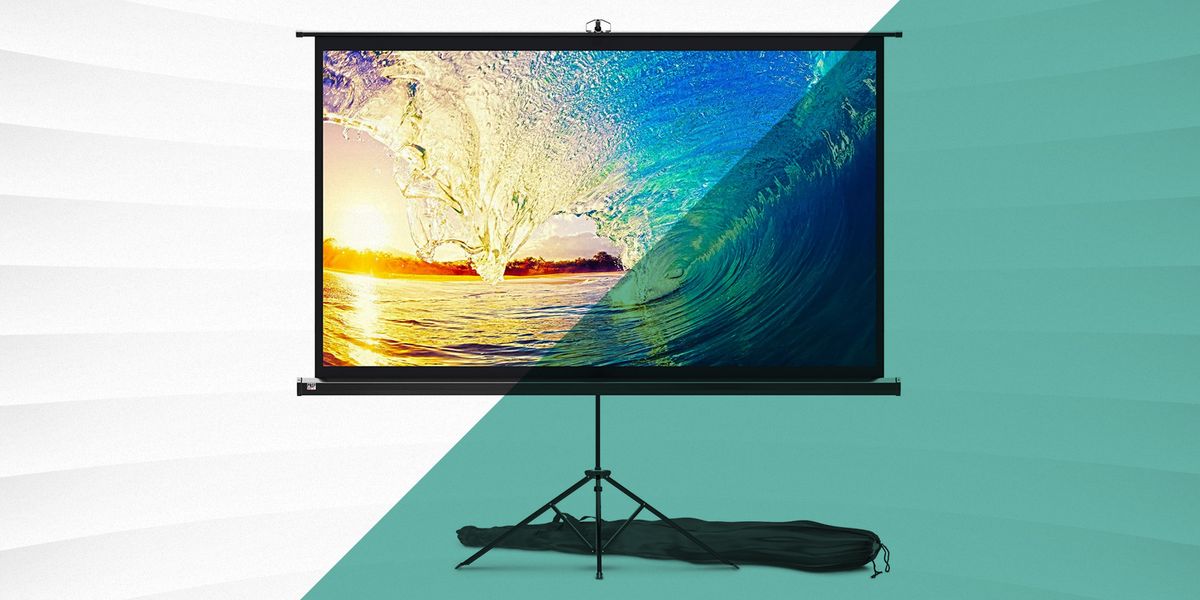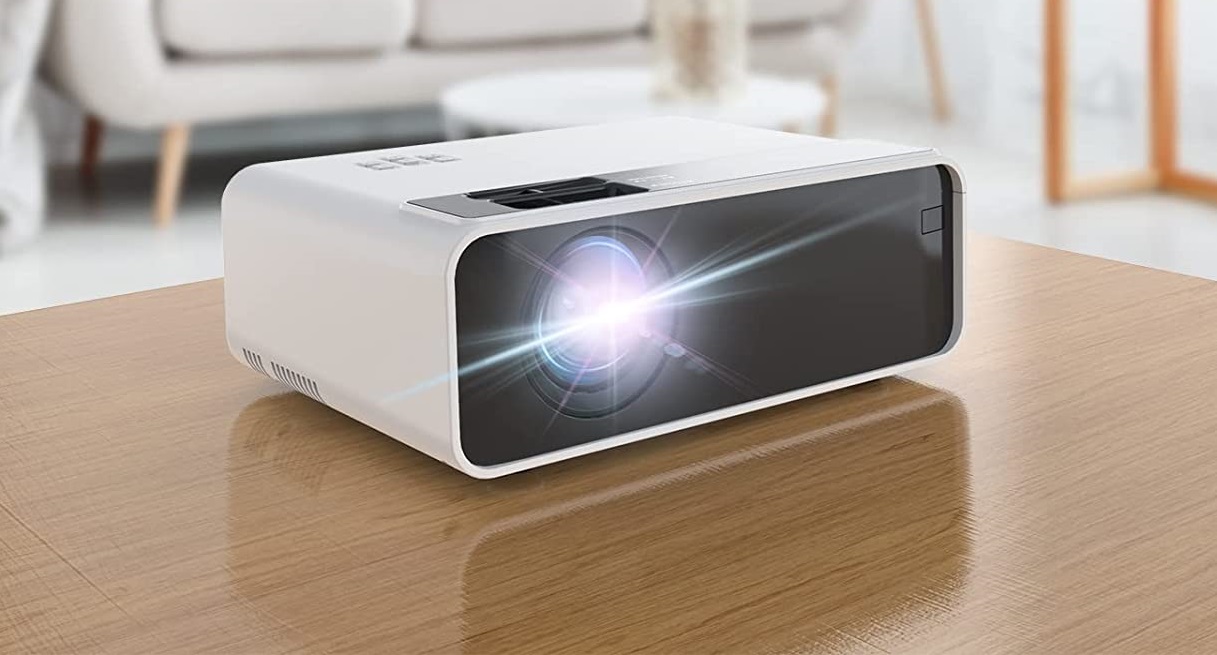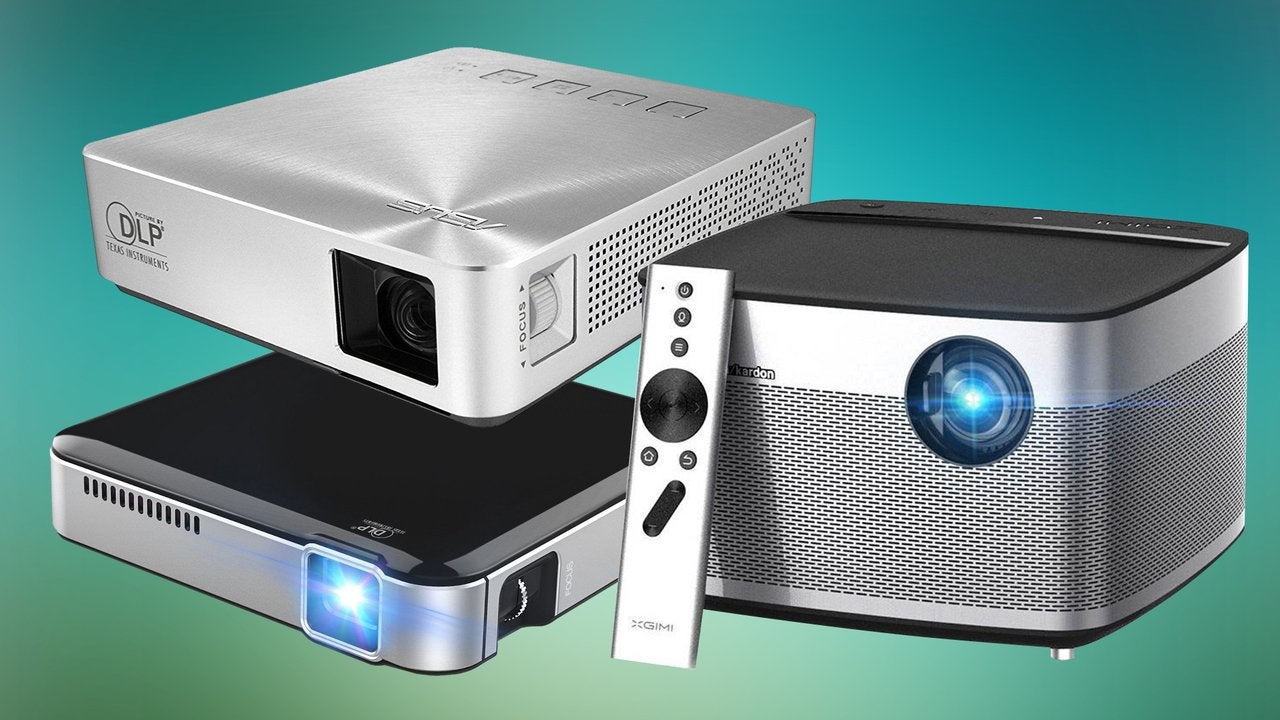Introduction
Welcome to the world of portable projectors, where the power of visual display meets the convenience of mobility. In today's fast-paced and dynamic environment, the need for flexible presentation solutions has led to the rise in popularity of portable projectors. These compact devices have revolutionized the way we share information, entertain, and educate, offering a convenient and versatile alternative to traditional fixed projectors.
Portable projectors, also known as mini projectors or pico projectors, are compact, lightweight, and easily transportable devices that can project images, videos, and presentations onto any flat surface. Whether it's for business presentations, movie nights, gaming, or educational purposes, these pocket-sized powerhouses have become indispensable tools for professionals and consumers alike.
As we delve deeper into the world of portable projectors, we will explore the various types available, the benefits they offer, key features to consider when choosing one, and the simple steps to set up and use these devices effectively. Whether you're a business professional looking for a convenient presentation tool, a movie enthusiast wanting a cinematic experience on the go, or a teacher seeking an interactive teaching aid, portable projectors have something to offer for everyone.
Join us on this enlightening journey as we uncover the wonders of portable projectors and discover how these innovative devices are reshaping the way we engage with visual content. Let's embark on an adventure that combines cutting-edge technology with the freedom of mobility, opening up a world of possibilities for seamless and captivating visual experiences.
What Is a Portable Projector?
A portable projector is a compact, lightweight device designed to project visual content onto a flat surface, such as a wall or screen, without the need for a fixed installation. These versatile gadgets are equipped with the latest display technologies, including LED, DLP, or LCoS, and are capable of projecting images, videos, and presentations from various sources such as laptops, smartphones, tablets, and USB drives.
Unlike traditional projectors that are bulky and require a dedicated space, portable projectors offer the flexibility to create an impromptu viewing or presentation area virtually anywhere. Their small form factor makes them highly portable, allowing users to carry them in a bag or pocket, making them ideal for business professionals, educators, travelers, and home entertainment enthusiasts.
Portable projectors come in various sizes, ranging from palm-sized pico projectors to slightly larger mini projectors, catering to different needs and usage scenarios. They are designed for easy setup and operation, often featuring built-in speakers, wireless connectivity options, and long-lasting battery life, making them a convenient all-in-one solution for on-the-go projection needs.
These devices have transformed the way we consume visual content, enabling impromptu movie nights, immersive gaming experiences, impactful business presentations, and interactive classroom activities. With their ability to deliver vibrant and sharp images, portable projectors bring the big-screen experience to any location, enhancing entertainment and communication in a portable and user-friendly package.
Whether it’s for professional use, entertainment, or educational purposes, the portability and versatility of these projectors make them a valuable addition to any tech-savvy individual’s arsenal. Their ability to transform any space into a dynamic visual environment has made them an essential tool for modern lifestyles, offering a seamless blend of innovation, convenience, and performance.
Benefits of Using a Portable Projector
Portable projectors offer a myriad of benefits that cater to diverse user needs, making them indispensable tools in various settings. Whether for professional, educational, or entertainment purposes, these compact devices provide unparalleled advantages that set them apart from traditional fixed projectors.
- Portability: As the name suggests, the primary advantage of portable projectors is their portability. These devices are designed to be lightweight and compact, allowing users to carry them effortlessly wherever they go. Whether it’s for business meetings, classroom presentations, outdoor movie nights, or travel, the convenience of portability ensures that users can set up a projection display virtually anywhere.
- Flexibility: Portable projectors offer unmatched flexibility in terms of usage scenarios. They eliminate the need for a fixed installation, making them suitable for impromptu gatherings, temporary projection setups, and on-the-go entertainment. Their compatibility with various devices, including smartphones, tablets, and laptops, enhances their versatility, enabling seamless connectivity and content sharing.
- Space-Saving: Unlike traditional projectors that require dedicated mounting and wiring, portable projectors save valuable space by eliminating the need for permanent installation. This space-saving feature is particularly beneficial for small offices, classrooms, and homes where flexibility and minimalistic setups are preferred.
- Convenience: The convenience offered by portable projectors is unparalleled. With built-in rechargeable batteries, wireless connectivity options, and user-friendly interfaces, these devices simplify the process of setting up and using a projection system. Users can effortlessly transition from one location to another without the hassle of cables and complex configurations.
- Enhanced Collaboration: In professional environments, portable projectors promote collaboration by enabling seamless sharing of presentations, reports, and visual aids during meetings and conferences. Their ability to transform any space into a presentation venue fosters interactive discussions and effective communication among team members and clients.
- On-the-Go Entertainment: For entertainment enthusiasts, portable projectors unlock a world of on-the-go entertainment possibilities. Whether it’s hosting outdoor movie nights, gaming with friends, or creating immersive visual experiences while traveling, these devices bring a cinematic touch to leisure activities, elevating the overall entertainment experience.
These compelling benefits underscore the significance of portable projectors in modern lifestyles, offering unparalleled convenience, versatility, and performance in a compact and portable package.
Types of Portable Projectors
Portable projectors come in a variety of types, each tailored to specific user requirements and usage scenarios. Understanding the distinctions between these types can help individuals and organizations make informed decisions when selecting the most suitable portable projector for their needs.
- Pico Projectors: Pico projectors, also known as pocket projectors, are the smallest and most lightweight portable projectors available. These ultra-compact devices can easily fit into a pocket or bag, making them ideal for travelers, business professionals, and individuals seeking on-the-go projection capabilities. Despite their small size, pico projectors are capable of delivering impressive image quality and are often equipped with built-in batteries for added convenience.
- Mini Projectors: Slightly larger than pico projectors, mini projectors strike a balance between portability and performance. They offer enhanced brightness, resolution, and connectivity options while remaining compact enough to be easily transported. Mini projectors are popular choices for business presentations, classroom use, and home entertainment setups, providing a versatile projection solution in a portable form factor.
- Wireless Projectors: Wireless portable projectors leverage wireless connectivity technologies, such as Wi-Fi and Bluetooth, to eliminate the need for physical cable connections. These projectors enable seamless screen mirroring, content streaming, and device pairing, allowing users to project content from smartphones, tablets, and laptops without the constraints of wired connections. The wireless feature enhances mobility and convenience, making these projectors suitable for collaborative environments and mobile presentations.
- Battery-Powered Projectors: Battery-powered portable projectors are designed with built-in rechargeable batteries, offering freedom from power outlets and cables. These projectors are perfect for outdoor use, travel, and situations where access to electricity may be limited. The inclusion of long-lasting batteries ensures extended projection times, making them ideal for on-the-go entertainment and business presentations in various settings.
- Short-Throw Projectors: Short-throw portable projectors are engineered to project large images from a short distance, making them suitable for confined spaces and environments where traditional projection distances are not feasible. These projectors minimize shadows and obstructions, making them ideal for small meeting rooms, classrooms, and home theaters where space is limited.
Each type of portable projector offers unique features and advantages, catering to different user preferences and application requirements. By understanding the distinctions between these types, individuals and organizations can make well-informed choices when selecting the most suitable portable projector to meet their specific needs.
Features to Consider When Choosing a Portable Projector
When selecting a portable projector, it’s essential to consider a range of features to ensure that the chosen device aligns with specific usage requirements and delivers a satisfying projection experience. Understanding the key features and their impact on performance can help users make informed decisions when investing in a portable projector.
- Portability and Size: The compactness and weight of a portable projector are critical considerations, especially for users who prioritize mobility. Pico projectors offer ultimate portability, while mini projectors strike a balance between size and performance, making them suitable for various applications.
- Brightness and Image Quality: The brightness of a projector, measured in lumens, determines the clarity and visibility of projected content. Higher lumens result in brighter images, making the projector suitable for use in well-lit environments. Additionally, factors such as resolution and contrast ratio contribute to overall image quality, ensuring sharp and vibrant visuals.
- Connectivity Options: Versatile connectivity features, including HDMI, USB, and wireless capabilities, enhance the projector’s compatibility with different devices. The ability to connect smartphones, laptops, and other media sources seamlessly expands the versatility and usability of the projector.
- Battery Life: For users who require mobility and extended projection times, the battery life of a portable projector is a crucial consideration. Longer battery life allows for uninterrupted usage, making the projector suitable for outdoor activities, travel, and situations where access to power sources may be limited.
- Keystone Correction and Throw Ratio: Keystone correction capabilities ensure that projected images remain geometrically accurate, even when the projector is placed at an angle. The throw ratio determines the size of the projected image in relation to the distance between the projector and the screen, offering flexibility in projection setup and placement.
- Integrated Speakers and Audio Output: Built-in speakers or audio output options enhance the audio-visual experience, providing clear sound to accompany the projected content. Quality audio capabilities complement the visual presentation, making the overall experience more immersive and engaging.
- Operating System and Apps: Some portable projectors feature built-in operating systems and pre-installed apps, offering additional functionality such as streaming services, web browsing, and document viewing without the need for external devices. These smart features can enhance the projector’s versatility and convenience.
- Accessories and Mounting Options: Consider the availability of accessories such as carrying cases, tripod mounts, and screen options to complement the portable projector. These accessories can contribute to the ease of transport and setup, enhancing the overall user experience.
By carefully evaluating these features and their relevance to specific usage scenarios, users can make informed decisions when choosing a portable projector that meets their performance expectations and aligns with their mobility and connectivity needs.
How to Set Up and Use a Portable Projector
Setting up and using a portable projector is a straightforward process that can transform any space into a dynamic visual environment. Whether for business presentations, movie nights, or educational purposes, the following steps outline the simple process of setting up and utilizing a portable projector effectively.
- Choose the Projection Area: Select a suitable location with a flat, light-colored surface for projection. Ensure that the area is free from obstructions and allows for comfortable viewing by the audience.
- Connect Power Source: If the portable projector is battery-powered, ensure that the battery is fully charged. For projectors that require a power outlet, connect the power cable to a reliable power source.
- Connect Media Source: Use the appropriate cables or wireless connectivity options to connect the portable projector to the desired media source, such as a laptop, smartphone, or streaming device. Ensure that the media source is powered on and ready to transmit content.
- Power On the Projector: Press the power button on the projector to turn it on. Wait for the device to initialize and display the projection interface or home screen.
- Adjust Keystone and Focus: If necessary, use the projector’s keystone correction feature to align the projected image properly, especially if the projector is not positioned perpendicular to the projection surface. Adjust the focus knob or settings to ensure a sharp and clear image.
- Set Audio Output: If the portable projector features built-in speakers or audio output options, adjust the volume and audio settings to achieve the desired sound quality for the projected content.
- Begin Projection: Start playing the desired content on the connected media source. The projected image should appear on the chosen surface, providing a clear and vibrant display for the audience to enjoy.
- Position the Projector: If necessary, adjust the position and angle of the projector to optimize the projection size and viewing experience. Consider using a tripod or mounting accessory for added stability and flexibility in projection setup.
- Power Off and Disconnect: Once the projection session is complete, power off the projector and disconnect any connected media sources. Safely store the projector and accessories for future use, ensuring that it remains protected during transport and storage.
By following these simple steps, users can set up and use a portable projector with confidence, creating captivating visual experiences for a wide range of applications and environments. The convenience and versatility of portable projectors make them valuable tools for professionals, educators, and entertainment enthusiasts seeking seamless and engaging projection solutions.
Conclusion
Portable projectors have emerged as versatile and indispensable tools, offering unparalleled convenience, mobility, and performance in a compact and user-friendly package. These innovative devices have redefined the way we engage with visual content, providing seamless projection solutions for various applications, including business presentations, entertainment, and educational environments.
With their compact form factor and advanced features, portable projectors cater to the diverse needs of modern lifestyles, empowering users to create impromptu projection setups virtually anywhere. Whether it’s transforming a meeting room into a collaborative presentation space, hosting outdoor movie nights, or enhancing classroom learning experiences, portable projectors offer a dynamic and immersive way to share information and entertainment.
The benefits of portability, flexibility, and space-saving design make portable projectors valuable assets for professionals on the go, educators seeking interactive teaching aids, and entertainment enthusiasts craving cinematic experiences outside traditional settings. The diverse types of portable projectors, including pico projectors, mini projectors, wireless projectors, and battery-powered projectors, cater to specific usage scenarios, ensuring that users can find the ideal projection solution for their needs.
When selecting a portable projector, considering essential features such as portability, brightness, connectivity options, battery life, and audio-visual capabilities is crucial to ensure a satisfying projection experience. By carefully evaluating these features, users can make informed decisions and choose a projector that aligns with their specific requirements and performance expectations.
Setting up and using a portable projector is a straightforward process, allowing users to create captivating visual displays with ease. By following simple steps to connect, power on, adjust, and position the projector, individuals can transform any space into a dynamic visual environment, fostering engaging presentations, immersive entertainment, and collaborative interactions.
In conclusion, portable projectors have revolutionized the way we share information, entertain, and educate, offering a seamless blend of innovation, convenience, and performance. As these devices continue to evolve with advanced technologies and smart features, they are set to play an increasingly significant role in shaping the future of visual experiences, empowering users to unleash the power of projection in diverse and dynamic ways.







